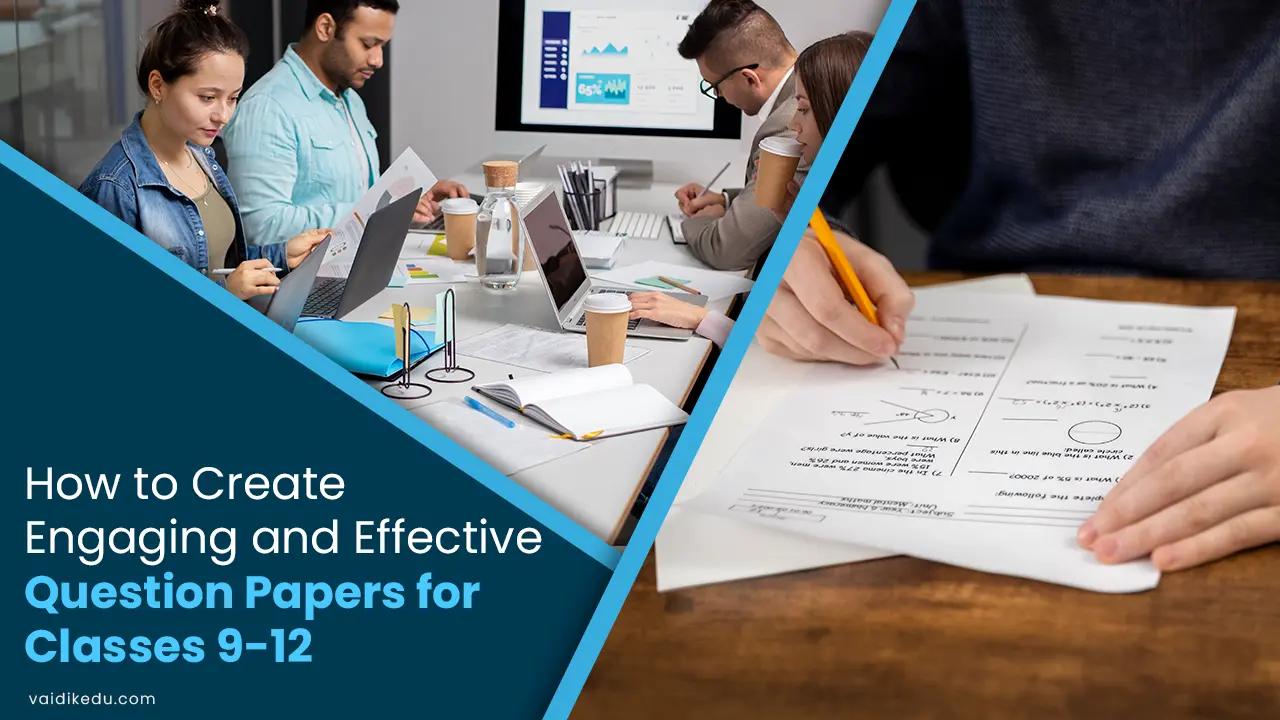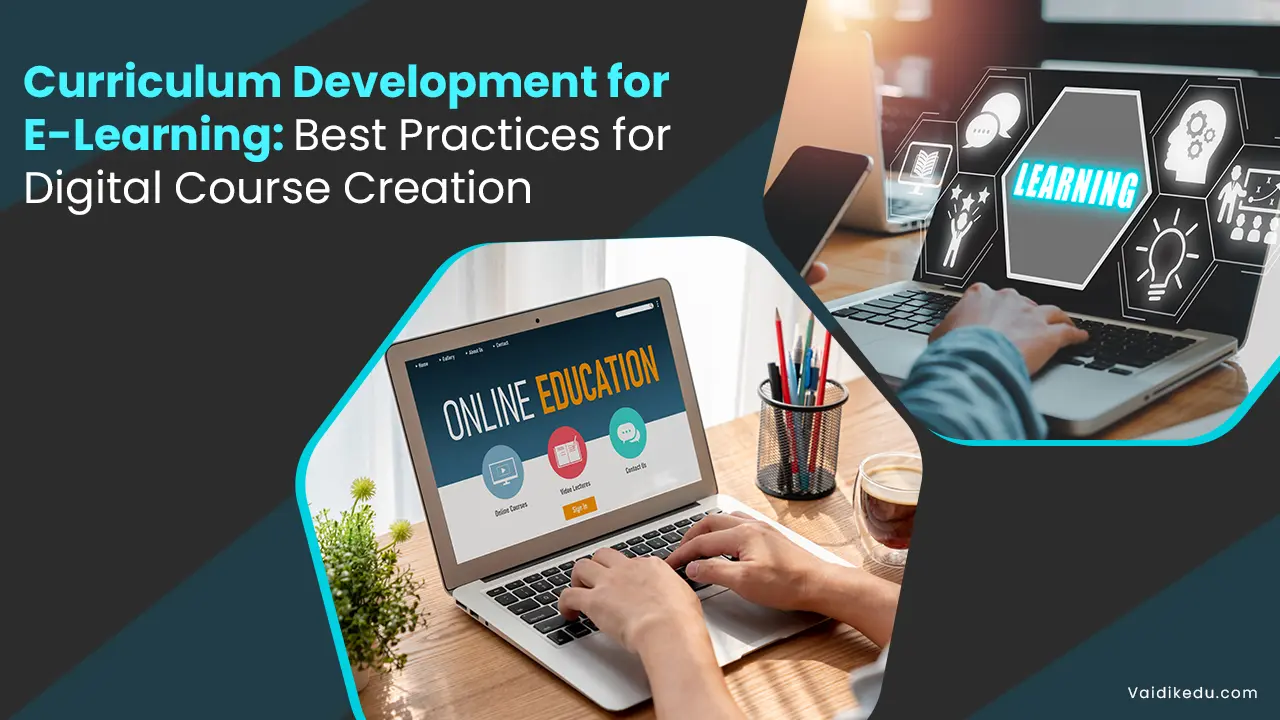
Designing a question paper for high school students (Class 9-12) is quite challenging but at the same time rewarding. It is an age group that starts from foundational learning to critical thinking, analytical reasoning and problem solving.
The effectiveness of the question papers depends on striking a balance between testing knowledge, skills and higher order thinking abilities while remaining engaging and fair.
Guide To Effective Question Paper Design
Define Clear Objective:
Begin with deciding what you are trying to measure. Are you measuring for the purpose of:
- Knowledge recall
- Application of Concepts
- Analytic reasoning
- Creative and problem solving ability
Bloom’s Taxonomy can be used to develop questions that fall from simple remembering to sophisticated creating, using the thinking categories in hierarchy: Remember, understand, analyze, evaluate and create.
Align With The Curriculum:
Ensure the question paper is as per the syllabus given by the education board. Questions must include all the essential topics without any bias or neglect.
- Use the weightage chart from the syllabus to allocate marks appropriately.
- Include questions from the core topics and subtopics to ensure comprehensive coverage.
Incorporate Diverse Question Types
A combination of questions types keeps the students interested and caters to different learning styles.
- Objective Questions- These require short answers to test the understanding.
- Long Answer Question- These are used to encourage in-depth explanations, reasoning and analysis.
- Application Based Question- Case studies, real- life scenarios, and problem solving tasks.
Different question formats cater to multiple intelligences, as identified by Howard Gardener, ensuring inclusivity in assessments.
Focus on Higher- Order Thinking Skills
Encourages students to think beyond rote memorization. Include question that require:
Analysis- Compare and contrast, identify patterns.
Evaluation- Justify decisions, assess arguments.
Creation- Develop solutions, propose innovative ideas.
For example: Instead of “State Newton’s Second Law,” ask “Analyze how Newton’s second law applies to a car accelerating on a highway.”
HOTS questions aptly support constructive theories where a student constructs his knowledge in relation to real scenarios connecting concepts.
Ensure Clarity And Simplicity
Ambiguity in question papers confuses the students and also affects the performance. Use simple concise language without technical jargon.
Instruction to be given for each section.
Highlight key terms such as “explain,” “illustrate,” or “justify”.
This will ensure questions are within the learner’s cognitive reach. Hence supporting Vygotsky’s Zone of Proximal Development.
Maintain An Appropriate Difficulty Level
A good question paper has just the right proportion of:
- Easier Question to develop confidence.
- Moderate questions for application.
- Challenging questions to develop mastery.
The 30-40-30 Rule-
30% easy,
40% moderate,
30% difficult questions.
The balance goes by the name differentiated instruction, lending to students with varying potentialities.
Contextualize Question
Make questions relatable by incorporating real world contexts, current events, or practical scenarios. This enhances student engagement and demonstrates the relevance of what they learn.
The example of Biology- Instead of asking “ Explain the process of Photosynthesis” ask “How does deforestation impact the process of Photosynthesis in a forest ecosystem?”
According to the theory of experiential learning, contextual learning tends to lead to deeper understanding and retention.
Incorporate Visual Elements
Diagrams, graphs and charts make question papers more interactive and test students’ interpretative skills.
For example, mathematics subjects provide graphs in questions like “Determine the slope of the line passing through points A and B.”
They assist visual-spatial learners and make cognitive engagement higher.
Provide Adequate Time And Marks
Ensure that the time allocated is realistic for students to complete the paper without undue stress. Similarly, mark proportionately based on the complexity and length of the expected.
Pilot-test the paper to determine the time needed. Avoid overly lengthy questions that demand extensive writing.
Include Innovative Sections
To break the monotony, introduce unique sections such as:
Assertion-Reason Question
Puzzles and Riddles ( Math And Logical Reasoning).
Open- Ended Questions: Allow students to express opinions or devise solutions.
For example in History “What can today’s leaders learn from the French revolution”?
Common Mistakes to Avoid
- Bias- The question referred from culture or region should be avoided.
- Repetition- Refrain from asking similar questions in different forms.
- Overemphasis on Memory- Prioritize understanding and application over rote learning.
Benefits of Well- Designed Question Paper
Holistic learning and clearer conceptual understanding come in as a significant factor in this process through proper design of the question paper. Encouraging an environment for higher- order thinking that helps link ideas and concepts properly to apply their knowledge, thus taking them from the rote remembering style, is accomplished.
A combination of question types along with varying degrees of difficulty promotes students’ self-confidence and also helps reduce examination anxiety. Besides, well designed question papers help the teachers get a better sense of the strengths and weaknesses of their students so that the teaching strategy can be designed accordingly for better learning.
Frequently Asked Questions
It is essential to ensure that each question in the paper is of proportionate ratio to the total syllabus covered. All issues have to appear with equal intensity, and the same should accompany a balanced blend of question levels so that this allows students at different levels to clearly exhibit the knowledge. Furthermore, the question should be sharp and unambiguously pointed so that this does not permit any bias on the part of the group involved. This approach ensures an equitable and inclusive evaluation environment.
Regularly review and update patterns based on curriculum changes, student feedback, and evolving educational goals.








